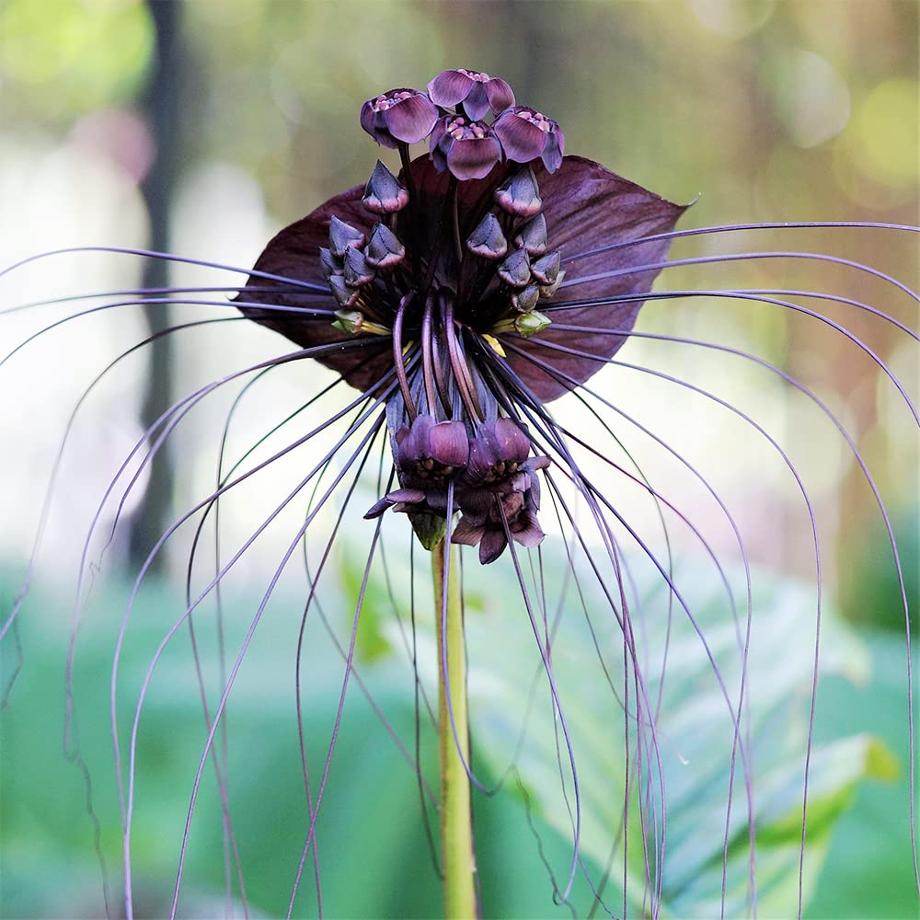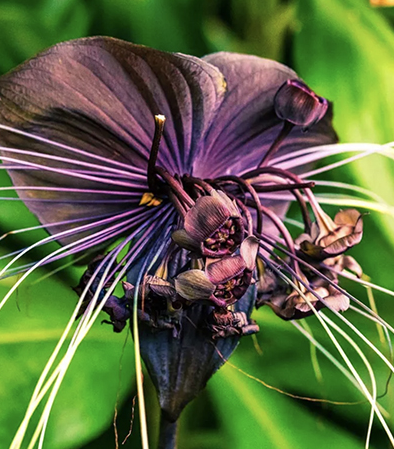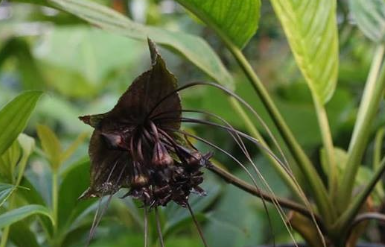Bat Plant
Bat Plant (Tacca chantrieri) is a tropical plant growing 2-3 feet tall, hardy in USDA zones 10-11, with moderate growth in moist, well-drained soil, requiring indirect light and high moisture, and it is neither edible nor medicinal.

Habit
Tropical
Height
0.6-1 m
Growth
Moderate
Soil
Well-drained acidic soil
Shade
Indirect light
Moisture
High
Edible
No
Medicinal
No
Origin
Southeast Asia
Climatic Condition
Tropical
Temperature (°)
20-30°C
Humidity (%)
70-90%
Potting media
Peat-based mix
Fertilizers
Acidic fertilizer
Watering
Regular watering; keep soil consistently moist
Plant Weight
1-2 kg
Flowering Time
Summer to Fall
Soil Ph level
5.5 - 6.5
Water Ph level
5.5 - 6.5
Soil EC
Medium
Yield Per Plant
Ornamental use
NPK ratio
10:10:10
life Span
Perennial
Health Benefits
Suggested Grow Media or Potting Mix ?
50% peat moss, 30% perlite, 20% compost
Suggested Fertigation/Fertilizers
Fertilize every 4 weeks with a balanced fertilizer.
Common Diseases and Remedies
Root Rot, Fungal Infections, Leaf Spot, Aphids, Mealybugs
Improve soil drainage, remove affected parts, use neem oil
Fungicides, systemic insecticides
HEALTH BENEFITS
The bat plant (Tacca chantrieri) is a unique tropical plant known for its striking black or dark purple flowers that resemble a bat. While it is primarily grown as an ornamental plant, some traditional medicinal uses have been reported in various cultures. However, scientific research on its health benefits is limited.
Potential Health Benefits
- Anti-Inflammatory Properties – Some studies suggest that compounds in Tacca species may have anti-inflammatory effects, which could help with pain relief and swelling.
- Antioxidant Activity – Like many tropical plants, the bat plant may contain antioxidants that help fight free radicals and reduce oxidative stress.
- Wound Healing – In some traditional medicine practices, parts of the plant are used to promote wound healing and treat skin infections.
- Antibacterial & Antifungal Effects – Some research suggests that extracts from Tacca species have antimicrobial properties, which may help fight certain bacterial and fungal infections.
- Potential Cancer-Fighting Properties – Some early research on related Tacca species indicates possible anti-cancer properties, but more studies are needed.

